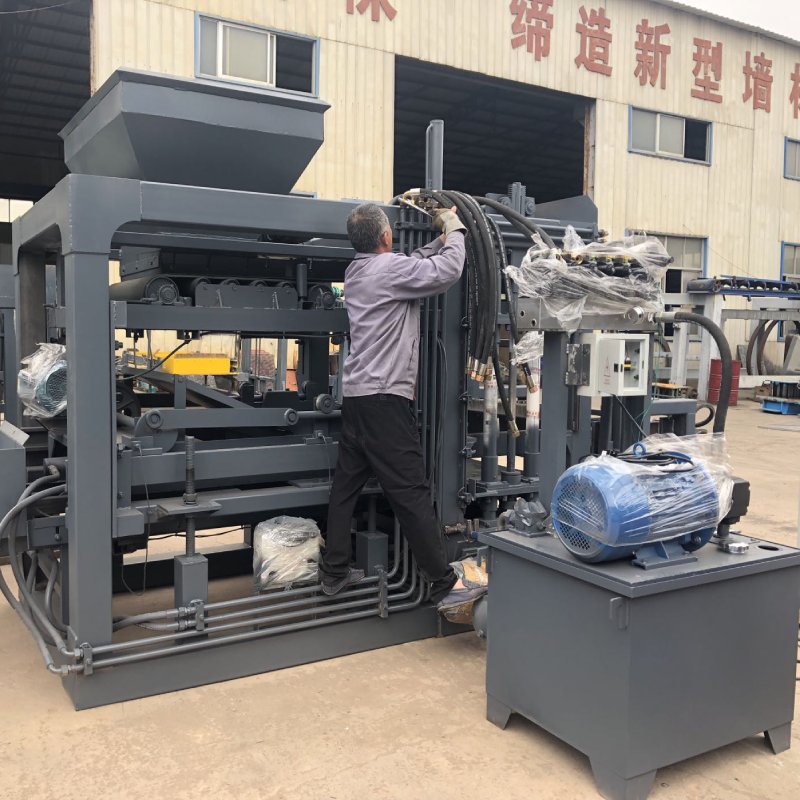
Image source Aiwei Block machine
Choosing the Right Brick Block Machinery for Your Project
Introduction
In the world of construction, the choice of brick block machinery is paramount. The efficiency and effectiveness of brick and block production directly impact project timelines and costs. Therefore, selecting the right machinery is not just a preference; it’s a strategic decision. This article provides valuable insights into the factors that influence your choice, helping you make an informed decision that aligns with your project’s goals.
1. Assessing Your Project Requirements
1.1. Brick or Block Production
- Determine whether your project requires bricks, blocks, or both.
- Consider factors like size, shape, and strength requirements.
1.2. Production Volume
- Estimate the daily or hourly production capacity needed.
- Consider the project’s scale and timeline.
2. Types of Brick Block Machinery
2.1. Manual Machines
- Suitable for small-scale projects or startups.
- Require significant manual labor and may have limited production capacity.
2.2. Semi-Automatic Machines
- Offer improved efficiency with partial automation.
- Ideal for medium-sized projects with moderate production demands.
2.3. Fully Automatic Machines
- High-capacity machines with minimal manual intervention.
- Suited for large-scale projects with demanding production requirements.
3. Customization for Project Specifics
3.1. Modular Design
- Opt for machinery that allows for quick mold changes and customization.
- This flexibility accommodates variations in brick and block sizes.
3.2. Tailored Solutions
- Some manufacturers offer customized machinery tailored to your project’s unique needs.
- This option optimizes efficiency and reduces waste.
4. Sustainability Considerations
4.1. Eco-Friendly Materials
- Choose machinery constructed with sustainable materials.
- Ensure the use of recycled or renewable resources.
4.2. Energy Efficiency
- Prioritize energy-efficient machinery to reduce operating costs and environmental impact.
- Explore solar-powered options in regions with abundant sunlight.
5. Budget Constraints and Cost Analysis
5.1. Initial Investment
- Evaluate the initial cost of machinery acquisition.
- Consider financing options and potential return on investment.
5.2. Operating Costs
- Analyze long-term operating costs, including energy consumption, maintenance, and labor expenses.
- Seek cost-effective machinery that aligns with your budget.
6. Regulatory Compliance and Safety
6.1. International Standards
- Ensure that the selected machinery complies with international quality and safety standards.
- Verify ISO certifications and third-party testing.
6.2. Operator Safety
- Prioritize machinery equipped with safety features like emergency stop systems and safety sensors.
- Invest in operator training for safe machinery operation.
7. Maintenance and Support
7.1. Availability of Spare Parts
- Check the availability of spare parts and their cost.
- Ensure that spare parts can be easily sourced.
7.2. Technical Support
- Assess the level of technical support provided by the manufacturer.
- Timely assistance can minimize downtime in case of issues.
8. Environmental Impact Assessment
8.1. Environmental Regulations
- Understand and adhere to local environmental regulations.
- Choose machinery that aligns with these regulations, especially regarding emissions and waste disposal.
8.2. Recycling and Waste Reduction
- Explore machinery options that minimize material waste during production.
- Implement recycling practices for waste materials.
9. Project-Specific Challenges and Considerations
9.1. Climate and Weather Conditions
- Consider machinery that can withstand the project’s climate conditions.
- Extreme temperatures or humidity may require special features.
9.2. Site Constraints
- Assess the available space for machinery setup and operation.
- Ensure that the selected machinery fits within the site’s parameters.
10. Conclusion
Choosing the right brick block machinery is a pivotal decision that can significantly impact your construction project’s success. By carefully assessing your project’s requirements, considering the types of machinery available, customizing solutions, prioritizing sustainability, managing budget constraints, ensuring regulatory compliance and safety, and addressing maintenance and support needs, you can make an informed choice that aligns with your project’s goals.
Modern brick block machinery is more than just a tool; it’s an essential partner in constructing the future. With the right machinery, your project can achieve greater efficiency, cost-effectiveness, and sustainability, ultimately contributing to the success of your construction endeavors.
